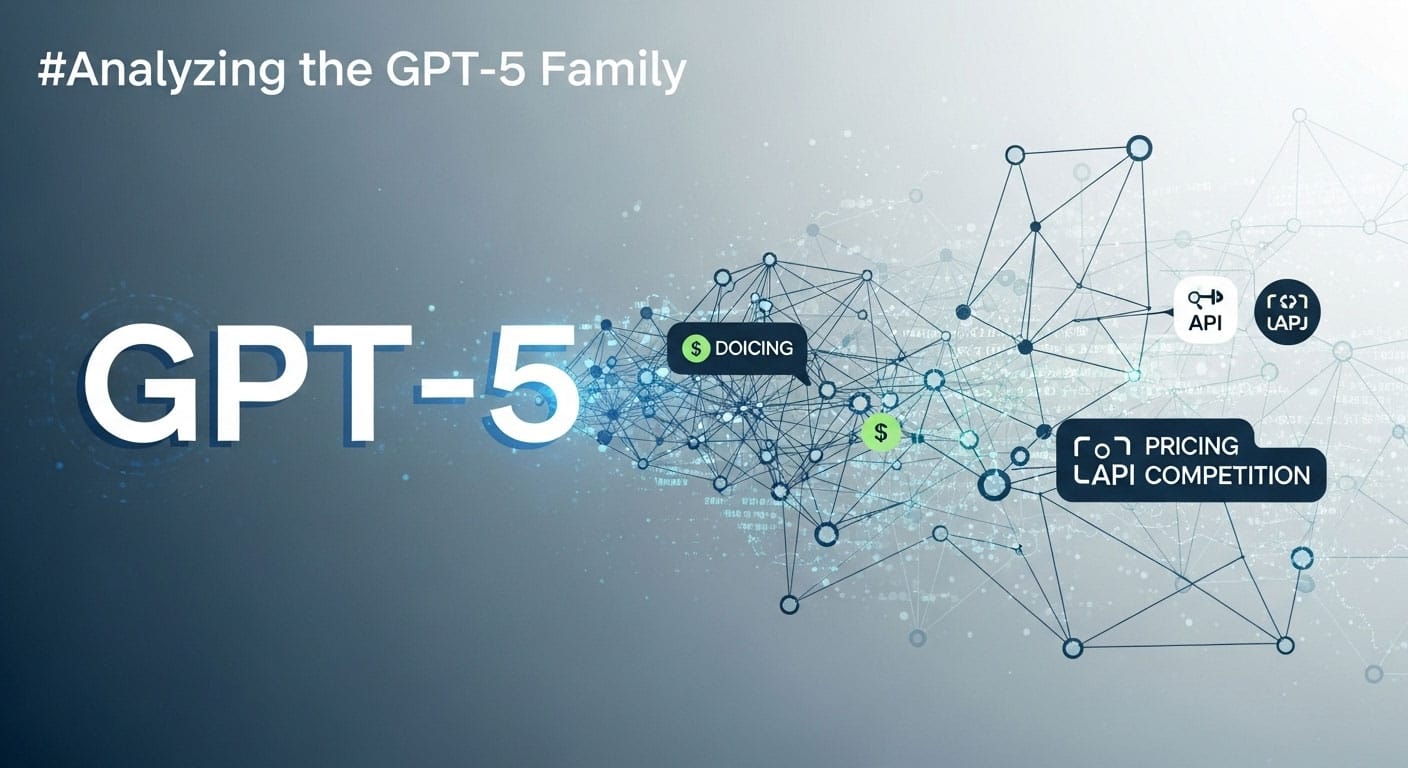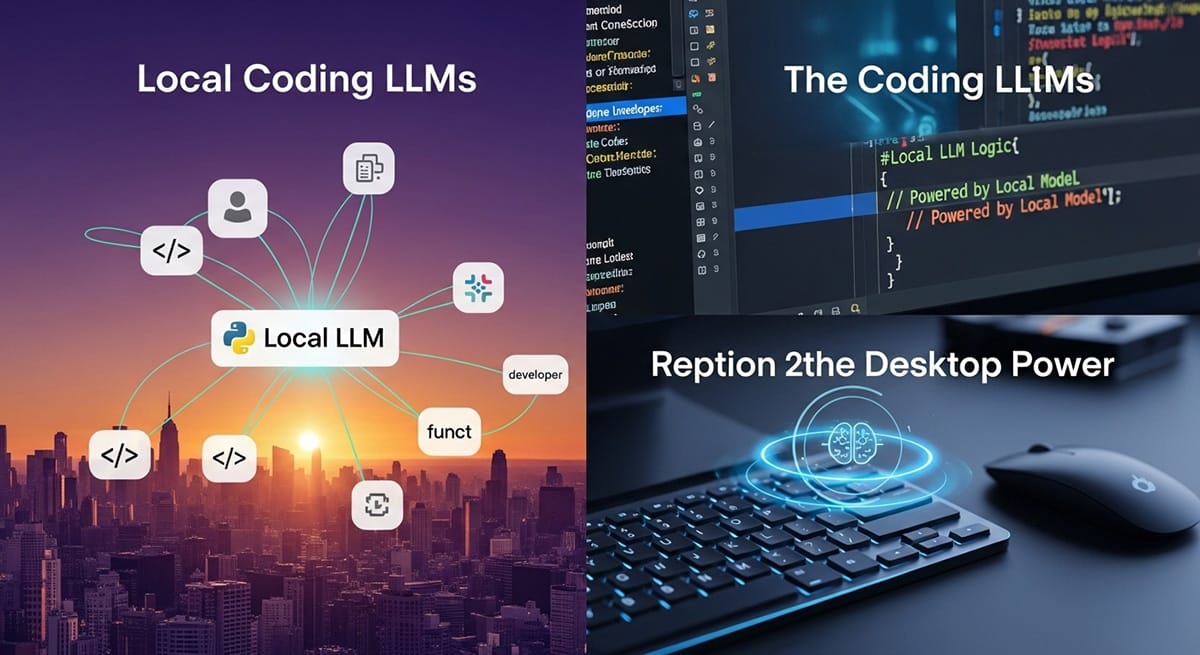Analyzing the GPT-5 Family: A Full Breakdown of Model Differences, Pricing, and API Competition
OpenAI’s new GPT-5 model family represents a significant evolution in their lineup, offering a trio of models—GPT-5, GPT-5 Mini, and GPT-5 Nano—each designed for different use cases. While not a dramatic paradigm shift, the new models exude a high level of competence and are positioned to replace most predecessors. This guide provides a comprehensive analysis of the differences between GPT-5, GPT-5 Mini, and GPT-5 Nano, covering their prices, capabilities, features, token limits, API details, and how they stack up against the competition.
Key Model Characteristics & Capabilities
The GPT-5 system is implemented differently between the user-facing ChatGPT product and the developer-focused API.
- In ChatGPT: GPT-5 operates as a hybrid system. It uses a real-time router to dynamically select the best model for a given task—a fast model for simple queries and a deeper reasoning model for complex problems.
- In the API: The offering is more direct, with three distinct models available. Developers can choose between GPT-5, GPT-5 Mini, and GPT-5 Nano.
Core Features and Technical Specifications
- Input/Output: All models support both text and image inputs, but currently only produce text output.
- Token Limits: The models feature a generous input context window of 272,000 tokens and an output limit of 128,000 tokens. This output limit also includes “invisible” reasoning tokens used by the model during processing.
- API Reasoning Levels: A key new API feature is the ability to select one of four reasoning levels for any of the three models: Minimal, Low, Medium, or High. This allows for fine-tuned control over performance and cost.
- Knowledge Cutoff: The main GPT-5 model has a knowledge cutoff date of September 30th, 2024, while the Mini and Nano variants are trained on data up to May 30th, 2024.
How GPT-5 Fits in OpenAI’s Model Family
The new models are positioned as direct successors to the GPT-4 generation. This simplifies the product line, making it easier for users and developers to choose the right tool. This table from OpenAI’s system card clarifies the new hierarchy and helps illustrate the key differences in capabilities and intended use cases for GPT-5, GPT-5 Mini, and GPT-5 Nano.
| Previous Model | New GPT-5 Equivalent |
|---|---|
| GPT-4o | gpt-5-main |
| GPT-4o-mini | gpt-5-main-mini |
| OpenAI o3 | gpt-5-thinking |
| OpenAI o4-mini | gpt-5-thinking-mini |
| GPT-4.1-nano | gpt-5-thinking-nano |
| OpenAI o3 Pro | gpt-5-thinking-pro |
The gpt-5-thinking-pro model is currently an exclusive offering for ChatGPT users on the $200/month tier, labeled as “GPT-5 Pro.” It’s important to note that capabilities like audio I/O and image generation remain handled by specialized models like GPT-4o Audio and DALL-E, not the core GPT-5 family.
GPT-5 Pricing vs. The Competition
OpenAI has adopted an aggressively competitive Pricing strategy, aiming to undercut major rivals. Understanding the pricing and capabilities of GPT-5, Mini, and Nano compared to their competition is crucial for developers and businesses planning to integrate these models.
OpenAI GPT-5 Family Pricing (per million tokens)
- GPT-5: $1.25 for input / $10.00 for output
- GPT-5 Mini: $0.25 for input / $2.00 for output
- GPT-5 Nano: $0.05 for input / $0.40 for output
Notably, GPT-5’s input cost is half that of GPT-4o, though the output cost remains the same. The cost of “reasoning tokens” counts towards the output total, which may increase costs for complex queries unless the reasoning level is set to “minimal.” A significant new API feature is a 90% discount on cached input tokens, which dramatically reduces costs for chat applications that re-send conversation history with each turn.
Comparative Pricing Against Key Competitors
Here is how the new GPT-5 pricing stacks up against other leading models in the market:
| Model | Input Price ($/million tokens) | Output Price ($/million tokens) |
|---|---|---|
| Claude Opus 4.1 | $15.00 | $75.00 |
| Claude Sonnet 4 | $3.00 | $15.00 |
| Grok 4 | $3.00 | $15.00 |
| Gemini 2.5 Pro | $2.50 | $15.00 |
| GPT-5 (New) | $1.25 | $10.00 |
| GPT-5 Mini (New) | $0.25 | $2.00 |
| GPT-5 Nano (New) | $0.05 | $0.40 |
In summary, the launch of the GPT-5 family introduces significant shifts in performance and cost-effectiveness. Evaluating the distinctions between GPT-5, Mini, and Nano—from their pricing and features to API competition—is essential for anyone building with the next generation of AI.











